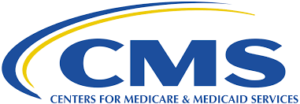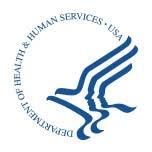The following is the latest COVID-19 information from the state and federal governments as of 2:30 p.m. on Tuesday, October 20.
Pennsylvania Update
Department of Health
 The Department of Health has issued its weekly news release updating its COVID-19 contact tracing efforts.
The Department of Health has issued its weekly news release updating its COVID-19 contact tracing efforts.- In its weekly guidance wrap-up document, the Department of Health addressed a skilled nursing facility’s question about how to protect respirators from surface contamination to prolong their use.
- COVID-19 testing sites have been launched in faith-based settings in communities in Allegheny and Dauphin counties. For more information, including a list of testing sites and when they will be operating, see this Department of Health announcement.
Department of Health – by the numbers
- Pennsylvania’s COVID-19 case count so far is just short of 185,000. The daily total has been in four figures every day this month except for one, which has not happened since the early months of the pandemic.
- With today’s latest figures, the death count now exceeds 8500.
- Of that number, 61 percent were residents of long-term-care facilities.
- Overall, more than 24,700 residents of long-term-care facilities and more than 5400 people who work in those facilities have contracted COVID-19. Those figures encompass 1028 facilities in 62 of Pennsylvania’s 67 counties.
- More than 11,700 health care workers in the state have contracted COVID-19.
- The number of people currently hospitalized with COVID-19 is up 65 percent since October 1.
- The number of COVID-19 patients currently breathing with the help of a ventilator is up 57 percent since October 1 and is at its highest level since August 20.
- 21 percent of hospital adult ICU beds are currently unoccupied, as are 19 percent of medical/surgical beds, 36 percent of pediatric beds, 20 percent of pediatric ICU beds, and 39 percent of airborne isolation unit beds. These figures are similar to what they were a week ago.
- The weekly news release from the office of the governor and the Department of Health reported that during the week of October 9-15, the number of COVID-19 cases rose 17.9 percent over the previous week and the state-wide positivity rate for COVID-19 tests rose from 3.9 percent to 4.3 percent during the same period.
- The highest positivity rates were in Huntingdon (9.9 percent), Westmoreland (8.9 percent), Bradford (8.3 percent), and Lackawanna, Lebanon, and Perry (8.2 percent) counties.
- Counties found to have substantial levels of community transmission were Berks, Blair, Bradford, Centre, Huntingdon, Lackawanna, Montour, Schuylkill, Union, and Westmoreland.
- Allegheny and Philadelphia counties are considered to have “moderate” rates of community transmission.
- Despite this, Philadelphia’s health commissioner reports that every zip code in the city is experiencing an increase in its number of cases, the Philadelphia Inquirer reports.
- Eight percent of all cases to date in the 8-15 years-old age group occurred during the week of October 9-15.
Department of Human Services
 DHS’s Office of Developmental Programs has updated operational guidance to implement services through Appendix K flexibilities approved for the Community Living, Consolidated and Person/Family Directed Support (P/FDS) Waivers during the COVID-19 pandemic.
DHS’s Office of Developmental Programs has updated operational guidance to implement services through Appendix K flexibilities approved for the Community Living, Consolidated and Person/Family Directed Support (P/FDS) Waivers during the COVID-19 pandemic.
Federal Update
Provider Relief Fund
HHS has updated its Provider Relief Fund FAQ with a new question that appears on page 46 and is marked “Added 10/15/2020.” The new question is “An organization has prescription sales as part of its revenue. Can these sales be captured in the data submitted as a part of revenue from patient care?” The answer is “Generally no, prescriptions sale revenue may not be captured as part of revenue from patient care. Only patient care revenues from providing health care, services, and supports, as provided in a medical setting, at home, or in the community may be included. Patient care revenues do include savings obtained by providers through enrollment in the 340B Program.”
Centers for Medicare & Medicaid Services
 CMS announced that starting January 1, 2021, Medicare will pay $100 for COVID-19 laboratory tests only to laboratories that complete high-throughput COVID-19 diagnostic tests within two calendar days of the specimen being collected. Also effective January 1, 2021, Medicare will pay only $75 for laboratories that take longer than two days to complete these tests.
CMS announced that starting January 1, 2021, Medicare will pay $100 for COVID-19 laboratory tests only to laboratories that complete high-throughput COVID-19 diagnostic tests within two calendar days of the specimen being collected. Also effective January 1, 2021, Medicare will pay only $75 for laboratories that take longer than two days to complete these tests.- CMS has updated the document “COVID-19 Frequently Asked Questions on Medicare Fee-for-Service (FFS) Billing” with new questions on pages 12-16 about the creation of new HCPCS codes and add-on payments for laboratory tests using high-throughput technologies.
- CMS has updated the article “Medicare Fee-for-Service Response to the Public Health Emergency on the Coronavirus (COVID-19)” in its online publication MLN Matters to clarify the HCPCS codes that critical access hospitals should use in the “Families First Coronavirus Response Act Waives Coinsurance and Deductibles for Additional COVID-19 Related Services” section. It also has clarified the “Skilled Nursing Facility (SNF) Benefit Period Waiver – Provider Information” section of that article to show that the skilled nursing facility waiver applies to swing-bed services in rural hospitals and critical access hospitals. All other information remains the same.
- CMS has published the results of its survey on how COVID-19 has affected Medicare beneficiaries’ daily lives and experiences, including the degree to which they have chosen to forego receiving health care, the steps they have taken to avoid contracting COVID-19, their experiences with telemedicine, and more. Learn more from the CMS announcement about the survey, view its data infographic on the survey’s results, and find a public use file detailing the survey results.
- CMS has published a list of all recipients of money through its Accelerated and Advance Payments Program, including how much money they received through this program. See the Medicare COVID Accelerated & Advanced Payment Data (ZIP).
Department of Health and Human Services
 HHS and the Department of Defense have announced agreements with CVS and Walgreens to provide and administer COVID-19 vaccines to residents of long-term-care facilities nation-wide with no out-of-pocket costs.
HHS and the Department of Defense have announced agreements with CVS and Walgreens to provide and administer COVID-19 vaccines to residents of long-term-care facilities nation-wide with no out-of-pocket costs.- Starting October 19, long-term-care facilities may opt into this program and indicate which pharmacy partner their facility prefers to have on-site. Long-term-care facilities are not required to participate in this program and can request to use their current pharmacy contracts to support COVID-19 vaccination. Nursing homes can sign up via the National Healthcare Safety Network and assisted living facilities can sign up via an online survey they will receive.
- In support of this action, CMS has posted a document outlining how it will exercise its enforcement discretion to permit pharmacists to bill Medicare directly when they administer COVID-19 vaccines at skilled nursing facilities.
- Communities that are part of the federal surge testing effort for COVID-19 now have a new option: a test that uses samples of saliva collected by spitting into a sterile container. The first place where the saliva test will be used is Waco, Texas. See HHS’s announcement of this new option.
- HHS’s Office of the Assistant Secretary for Planning and Evaluation has developed a “PPE Preservation Planning Toolkit.”
- HHS’s Office of the Assistant Secretary for Planning and Evaluation, in cooperation with the National Emerging Special Pathogen Training and Education Center and Project Echo, holds weekly COVID-19 clinical rounds peer-to-peer virtual communities of practice webinars: EMS – patient care and operations on Mondays at noon (eastern); critical care: life-saving treatment and clinical operations on Tuesdays at noon (eastern); and emergency department: patient care and clinical operations on Thursdays at noon (eastern). Go here to sign up for information on upcoming webinars.
Centers for Disease Control and Prevention
 The CDC has updated its information about how providers should report COVID-19-related laboratory data.
The CDC has updated its information about how providers should report COVID-19-related laboratory data.- The CDC has updated its interim guidance for providing home care to patients with COVID-19 who do not need hospitalization.
- The CDC has updated its information about resources for laboratories that perform COVID-19 diagnostic tests.
- The CDC’s morbidity and mortality weekly report includes its new research on race, ethnicity, and age trends in persons who died from COVID-19 from May through August.
- The CDC’s morbidity and mortality weekly report includes its new research on excess deaths in the U.S. associated with COVID-19 by age, and race and ethnicity from January 26 through October 3, 2020.
Food and Drug Administration
- The FDA has re-issued emergency use authorization (EUA) for certain filtering facepiece respirators that are not approved by the Centers for Disease Control and Prevention’s (CDC) National Institute for Occupational Safety and Health.
- The FDA has removed epinephrine from the list of drugs that it has authorized for temporary compounding during the COVID-19 emergency. Find the updated list of authorized drugs here.
- The FDA will host a virtual town hall for COVID-19 test developers on October 28, 2020 from 12:15 pm – 1:15 pm (eastern). The purpose of this town hall is to help answer technical questions about the development and validation of tests for COVID-19. Go here for information on how to join the event.
Department of Labor
The Department of Labor’s Occupational Safety and Health Administration (OSHA) has published an FAQ on how N95 respirators protect wearers from COVID-19 exposure.
Federal Reserve System
The Federal Reserve System will hold a webinar for its Main Street Lending Program on Wednesday, October 21 at 2:00 (eastern). That program supports lending to small and medium-sized for-profit businesses and non-profit organizations that were in sound financial condition before the COVID-19 pandemic but lack access to credit on reasonable terms. Go here to learn more about the program, sign up for the webinar, and submit questions about the program.
Resources to Consult
Pennsylvania Department of Human Services
Pennsylvania Department of Health